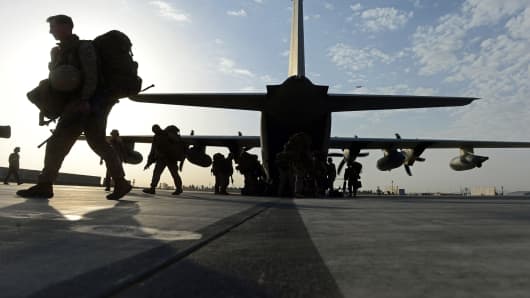"When the military makes cuts, they tend to be deep," CEO John A. Challenger said in a statement. "With wars in Afghanistan and Iraq winding down and pressure to cut government spending, the military has been vulnerable to reductions."
Those cuts represent a substantial hit to the Army, which has already trimmed some 23,000 enlisted personnel in the last 12 months, to 491,000 personnel as of the end of June, according to the latest data from the Defense Department.
Read MoreUS layoffs surge in July on military cuts
But the reductions represent a relatively small 4 percent cut in the overall U.S. armed services payroll of 1.3 million enlisted personnel. Another 750,000 civilians work directly for the DOD, which doesn't break out the number of people who work indirectly for defense contractors.
And for those enlisted servicemen and servicewomen who muster out, job prospects have improved as the overall recovery continues to put more Americans to work.
Finding a private sector job has been toughest for those who served most recently, but they're getting hired at about the same rate as the rest of the civilian workforce, according to Bureau of Labor Statistics data. The jobless rate for veterans who served in the most recent conflicts (defined by the BLS as "Gulf War Era II") jumped to 6.7 percent last month from 5.4 percent in June—more than a full percentage point higher than than the 5.4 percent rate for Americans who never entered military service.



